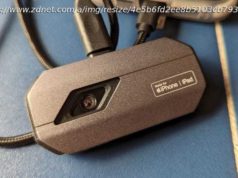The cyber security landscape has fundamentally changed in recent years, and the days of a four-year hardware refresh cycle are well and truly over.
The nature and focus of cyber security has changed massively over the course of the decade thanks to the rapid distribution of the workforce and shifting employee attitudes. The increase in certain types of cyber attacks, too, has prompted businesses – of all sizes in a variety of sectors and geographies – to think more holistically about security and how best to safeguard critical assets.
Hardware refresh timelines represent a prime example of the shifting lens through which IT decisions are made. Indeed, purchasing hardware used to be considered a fairly standard tick-box exercise, with organizations normally adhering to a three or four-year device lifecycle. However, the mass move to hybrid and remote working, coupled with a move to protect business devices at every stage – from BIOS to applications – has knocked this slow-but-steady purchasing pattern off course.
What’s more, the need to focus on preventing the exploitation of new attack vectors (rather than simply resolving any issues after the fact) means IT decision-makers have had to think fast and act decisively, with much of this work going under the radar. Indeed, a small contingent of IT heroes have been working tirelessly to protect their employees and their data. They’ve been helping businesses operate more securely and efficiently, often turning to devices powered by the Intel vPro® platform to ensure the hardware stack is as robust as possible for the post-pandemic threat landscape.
It’s clear, then, that IT expedited hardware refresh cycles have moved from a luxury many organizations can only dream of funding, to a business necessity that cannot be ignored.
In January 2023, Intel launched its 13th generation of the vPro platform, which includes critical threat prevention baked in. All in all, this goes a long way to reducing a device’s attack surface by approximately 70% when compared with a four-year-old machine. Cyber security: A changing game
Much of the work IT professionals do on a day-to-day basis goes largely unnoticed. These teams – prevalent in most if not every organization – are the front line of defense against an onslaught of ever-evolving cyber attacks. But most employees don’t strike up interactions with IT staff unless something’s gone wrong. Indeed, when things go right, most employees barely hear a peep from their corporate IT heroes, save for the occasional policy update. The transition from largely in-office working to remote and hybrid working is a perfect example of the additional and often unrecognized work IT teams have put into keeping businesses running, and ensuring employees and assets remain as highly protected as possible.
Flexible and remote working as well as initiatives such as Bring Your Own Device (BYOD) are not inherently new to organizations. But, if we cast our minds back to March 2020, we witnessed an accelerated transition from predominately office-based roles to – in some cases – entirely home-based working.






